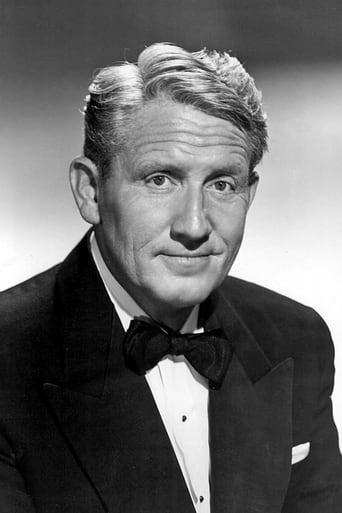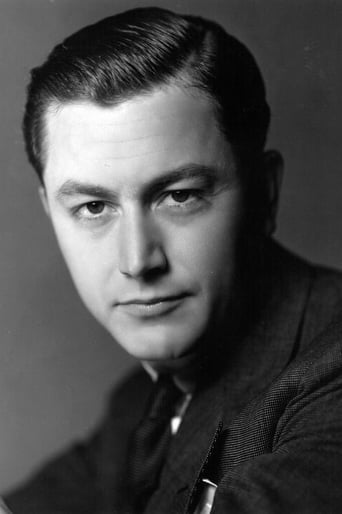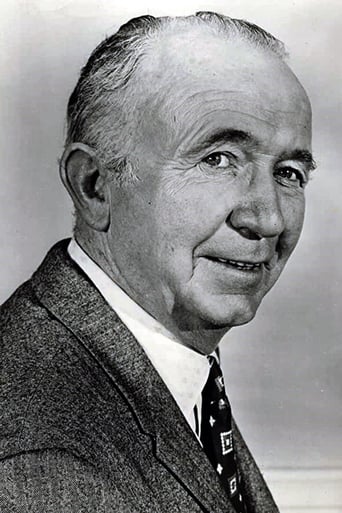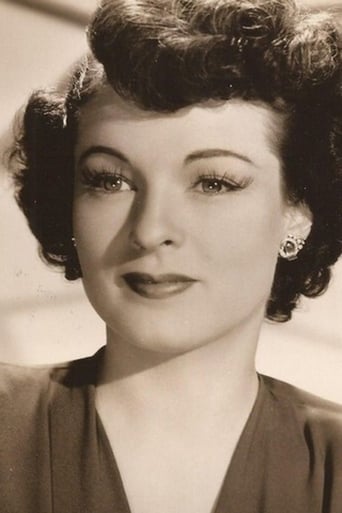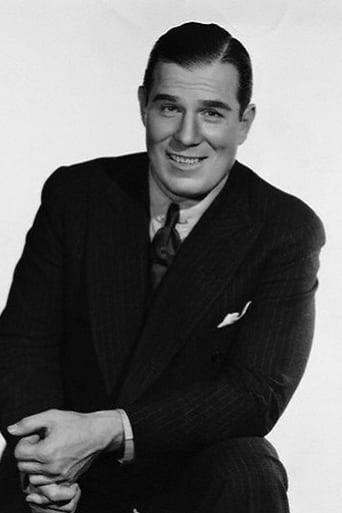Beystiman
It's fun, it's light, [but] it has a hard time when its tries to get heavy.
Kien Navarro
Exactly the movie you think it is, but not the movie you want it to be.
Juana
what a terribly boring film. I'm sorry but this is absolutely not deserving of best picture and will be forgotten quickly. Entertaining and engaging cinema? No. Nothing performances with flat faces and mistaking silence for subtlety.
Logan
By the time the dramatic fireworks start popping off, each one feels earned.
weezeralfalfa
Lead Spencer Tracy had recently led an exploration expedition into darkest Africa, in "Stanley and Livingstone". Now, with similar bravado, he leads a military expedition through the wilderness, from Crown Point, on Lake Champlain, to the French Canadian- Abanaki village of St. Francis, whose warriors had been raiding settlers in the New England frontier. The screenplay is based upon the novel of the same title, which was based on history. It was filmed in gorgeous Technicolor: the first Tracy film given the color treatment. Part was filmed in the MGM studio and part in the mountains of Idaho.I noticed something unusual in the main characters included. Tracy was the dramatic lead, while Robert Young was the fictional romantic lead: with an aristocratic bearing, who had spent some time at Harvard before being kicked out. He was a painter, made maps for Rogers during the expedition, and was probably one of the few literate members of the expedition. In the film "Hudson's Bay", released the following year, we have a very similar situation. The screenplay is mostly about traveling around in the Canadian wilderness in the 1600s, collecting furs. Paul Muni is the roguish historical dramatic lead, while John Sutton, as his fictional aristocratic companion, is the romantic lead. In both films, a fictional female lead is present. Why was a fictional romantic lead teamed with the man of action? In both cases, the actor playing the romantic lead was in his early 30s vs. 40s for the man of action, and was more handsome. Thus, by reason of age, looks, and lack of aristocratic bearing, the dramatic lead was deemed a poor match for the beautiful, aristocratic, female lead. Also, the man of action was too restless, moving around in the wilderness most of the time, to settle down with a wife. Another interesting tidbit I discovered: The female lead's character was named Elizabeth Browne, which was also the maiden name of the wife of the real Robert Rogers!While on the subject of women, there were 2 European women captives in St. Francis. The older one, who hadn't been there so long, was glad to be rescued, while the younger one, who had been captured when a girl, and was now a teen, thought of herself as an Abanaki, thus resisted being "liberated". This was a typical contrast among females captured by 'Indians'.In St. Francis, we see many Abanaki warriors killed. Rogers claimed abut 200 Abanaki were killed. But the French reported that only about 30, all women and children were killed, as the men were all out on a raid. Since Rogers reported losing about 100 men on the expedition, if the French information is close to correct, this was a pyrrhic victory, although the number of settlers killed in raids did decline after St. Francis was burned. Reportedly, Rogers often exaggerated his accomplishments. Otherwise, the screenplay is remarkably faithful(for a Hollywood film) to the historical details.Rogers was next assigned to the mid-Great Lakes region, where he captured Detroit, as well as other French outposts. Later, he did send several parties to look for a northwest passage to Asia. But, he gradually spiraled into debt and alcoholism, thus played only a very minor and chaotic part in The Revolutionary War, mostly siding with the British. I have to wonder whether, at the subliminal level, the Abanaki are supposed to represent Nazi Germany, as I have proposed is relevant to several Errol Flynn films of this era. This one differs from the Flynn films, in that it is tightly based on a historical incident.The anticipated telling of Roger's adventures in the mid and western Great Lakes region in a sequel film was cancelled. Thus, the title given to this film makes no sense. The title of this review would have been much more appropriate, perhaps shortened to Roger's Rangers.I give this film a high rating for historical accuracy, quality of presentation, and entertainment value. See it. You will never forget it. I think Tracy should have received The Best Actor Oscar, but he had already taken home several Oscars in the last few years. Perhaps the film should have taken home an Oscar, as well.
Kittyman
Two months before his death in 1957, Kenneth Roberts received a special Pulitzer Prize for his historical novels. Of them, Northwest Passage was his most famous. It consisted of two distinct parts, and was the second best selling American book of 1937 (after first having been serialized in the Saturday Evening Post).MGM's 1940 movie is based on the first, and in my opinion, better part of the book. It recounts Major Robert Rogers' 1759 raid on St. Francis, an Abenaki village, during the French and Indian War. As Rogers, Spencer Tracy gives a powerhouse performance, King Vidor delivers the directorial goods, and the storyline, itself, is very exciting. Indeed, I remember Northwest Passage fondly from my childhood, and consider it a classic. However, because of today's values, it probably appeals more to conservatives than liberals.In 1945, Warner Brothers' Objective, Burma! (starring Errol Flynn) used the same plot without attribution--a Japanese transmission station replacing the Indian village. (Directed by Raoul Walsh, it too is very well done.) Then, in 1951's Distant Drums (starring Gary Cooper), director Walsh again used the same plot without attribution. This time the movie (which is not so well done) occurs during The Seminole Indian Wars (1835–1842), and the initial objective is an old Spanish fort, lying deep within the Everglades.In conclusion, I'm not shocked that Hollywood recycled Roberts' plot without attribution. (You only have to remember Dorothy Parker's quip "The only 'ism' Hollywood believes in is plagiarism.") I am, however, somewhat shocked that Roberts did not sue. (His reputation was that of an acerbic curmudgeon.) But, then again, maybe he just didn't know.
sjgorek
I've been watching this movie occasionally since 1950, whenever it was on. It has all the attributes of a classic, scenery, music and strong acting not to mention the display of core American values and early American hardiness. It still fascinates me to think of New York as the edge of the frontier. The story is accentuated by the fact I have visited the Hudson River area up to Fort Ticonderoga and the difference between this area and New York City is simply beyond comparison. If I have any criticism of this movie it is my wish the movie name had been more appropriate to the story and the related historic expedition. It is a great movie in the tradition of all great movies, simply entertaining! What A Great Movie!
lastliberal
It is no surprise that a movie about travel in the Northwest would be nominated for Best Cinematography. In fact, another film that year, North West Mounted Police, competed in the same category. They lost, as we currently are to The Thief of Bagdad.A political comment is appropriate when reviewing this film as it is a statement of our feelings in the middle part of the 18th century in America. Just as Major Rogers (Spencer Tracy) was trying on moccasins, he says, "Don't any of these red hellions have man-sized feet?" A statement that indicates just what he thought of the Native Americans he, and his band of Roger's Rangers, were wiping out. Well, they managed to cross the frontier and slaughter a village full of 'Indians," in fulfillment of their mission as mercenaries for the British in the French and Indian War. (Shades of Blackwater!) The film concerned itself mostly with the trip home, which was hellacious, and cost him most of his men.I enjoyed seeing Spencer Tracy (Oscars for Boy's Town and Captains Courageous, and seven more nominations) in his prime. This movie came out just after his two Oscar wins, and you see him at his peak.Robert Young ("Father Knows Best", "Marcus Welby, M.D.", The Enchanted Cottage) was quite interesting as a more humane individual (Harvard grad, artist, mapmaker), who tagged along to escape jail (Gitmo?) for criticism of the administration.Walter Brennan, who won an Oscar in 1939 and 1940 for The Westerner and Kentucky, and won one just a few years prior for Come and Get It, and who would get a nomination in the following year for a favorite: Sgt. York, was at the peak of his career and really shone as Young's sidekick.I am just glad that Young gets home to his fiancée, Ruth Hussey (The Philadelphia Story). Tracy goes off to kill more Native American in hopes of a promotion in the Tory Government, not knowing that he had hooked up with the losers.Directed by five-time Oscar nominee King Vidor, who is in the Guinness World Records as having "The Longest Career As A Film Director", spanning 67 years beginning with Hurricane in Galveston (1913) in 1913 and ending with the documentary The Metaphor (1980) in 1980.

